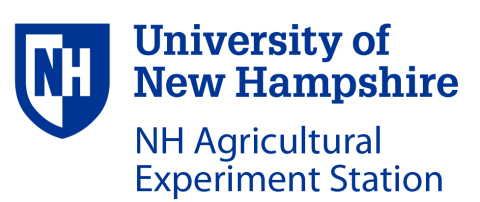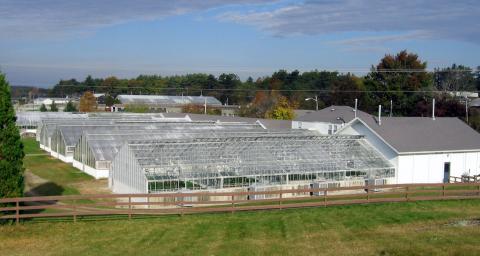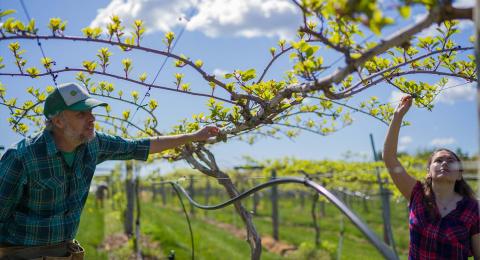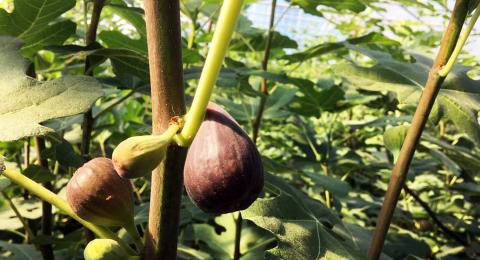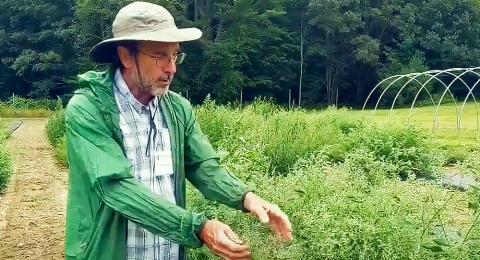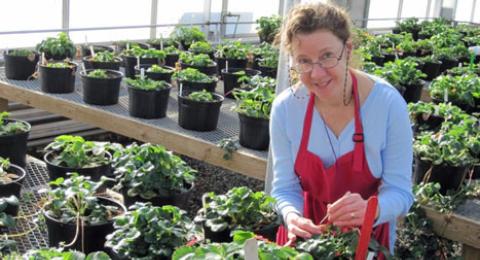Join us on April 6th, 2024, for the Macfarlane Research Greenhouses Open House!
The New Hampshire Agricultural Experiment Station is excited to welcome YOU – our supporters and fans – to the Macfarlane Research Greenhouses at UNH for our 2024 Open House on Saturday, April 6, from 9–3 p.m. We’re planning a full day of talks and presentations by NHAES researchers and Extension specialists. Learn about active research projects at the greenhouses and how the science benefits New Hampshire.
~ Anton Bekkerman, Director, NH Agricultural Experiment Station
2024 Schedule of Events
| Time | Event + Location | Description |
|---|---|---|
| 9 am | Open house begins | Macfarlane Research Greenhouses are open to the public |
| 11 am | Extension presentation Putnam Hall, Room 103 |
Climate Resilient Gardens: Gardening for Extreme Weather Conditions Explore techniques for resilient gardening with experts from Extension’s Home Horticulture Program as they impart practical strategies to combat the whims of weather. From navigating temperature fluctuations to managing moisture extremes, this session will equip you with the tools to cultivate a garden that not only withstands the challenges of climate change but also contributes to a healthier planet. Ready to transform your green thumb into a force for change? Join us and grow your garden's resilience for the future. Speakers: Sean O’Brien and Steph Sosinski from UNH Extension’s Home Horticulture Program |
| 11 am - 1 pm | Lunch available Macfarlane Greenhouse teaching classroom |
Lunch provided by the Gather food pantry. Lunches will be available to all, with donations encouraged. |
| 12 pm | Guided tour of UNH's teaching high tunnels (off-site) UNH teaching high tunnels, O'Kane Road |
Growing Food for Campus: Discovering UNH’s Teaching High Tunnels Come see the winter vegetable production. Transportation from Macfarlane Greenhouses will depart at 12:05 p.m. Or use our self-guided map for directions (available at the front door). Led by Susan Soucy, Horticultural Program Coordinator for UNH COLSA, with assistance from students. |
| 1 pm | NHAES research presentation Putnam Hall, Room 103 |
Grow Your Food Year-Round: Leveraging Indoor Food Production Systems for a Bountiful Annual Harvest Md Sazan Rahman, an Assistant Professor of Agriculture, Nutrition, and Food Systems at UNH, will discuss how home-based growers can leverage many of the same technologies that commercial growers have used for years to produce delicious fruits and vegetables year-round and on smaller scales. Rahman, whose research focuses on increasing agricultural quality and yield through controlled environment agriculture (CEA), will share advances in and uses of such tools and technologies as smaller-sized high tunnels and greenhouses, as well as hydroponic systems, growth chambers, and container farming all sized and affordable for the home grower. Plus, learn about some of the systems of these CEA operations, like HVAC and energy optimization, that can help reduce waste output and minimize the carbon footprint of your home-based growing operation. Speaker: Md Sazan Rahman, assistant professor of Agriculture, Nutrition, and Food Systems |
| 2 pm | NHAES research presentation Putnam Hall, Room 103 |
Growing Sweetpotatoes in the North: How to Succeed with These Delicious Roots Additionally, Sideman will share her expertise on harvesting techniques that maximize sweetness and flavor, and the proper methods for curing and storing sweetpotatoes to extend their shelf life. This talk is an opportunity for regional farmers and gardeners to unlock the potential of sweetpotatoes in their gardens, tapping into the crop's increasing popularity and nutritional benefits. Speaker: Becky Sideman, chair of COLSA’s Agriculture, Nutrition and Food Systems department; professor of Sustainable Agriculture and Food Systems |
| 3 pm | Open house ends |
Parking for the event is free in the nearby A lot (see map).
The Macfarlane Research Greenhouses
Read a history of the Macfarlane Research Greenhouses
About
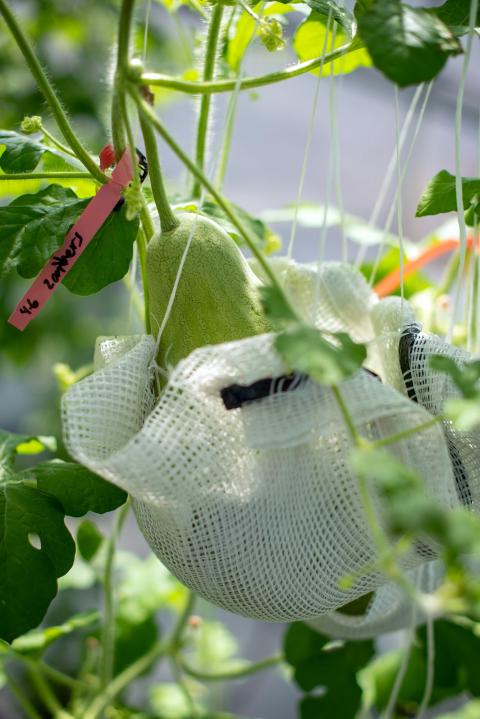
The 25,000-square-foot Macfarlane Research Greenhouses are dedicated to research and teaching associated with the NH Agricultural Experiment Station and College of Life Sciences and Agriculture.
The facility provides highly controlled environments for a diversity of research projects, including:
- Ornamental and food crop breeding
- Sustainable ornamental plant nutrition and development
- Aquaculture
- Biological pest control
- Bioremediation
- Plant genetic diversity
The greenhouse environments are monitored and precisely regulated through a computer-based control system that creates a sustainable growing environment through the conservation of heat, electricity, water and fertilizer, and increased plant resistance to insect pests and diseases.
In the News
- Dream (Green)house – COLSA THRIVE
- UNH Greenhouses Get Top Grade for Sustainability – Greenhouse Product News
